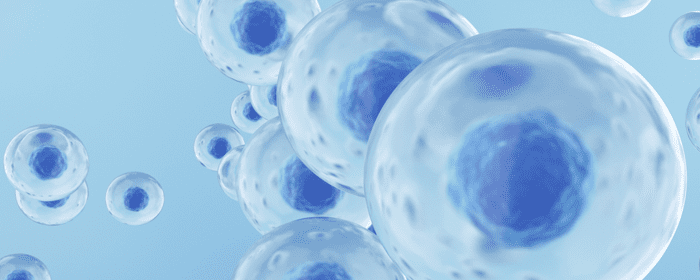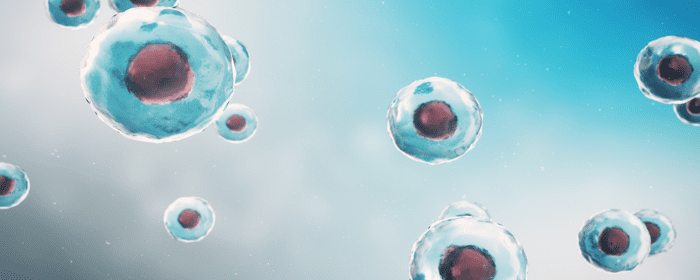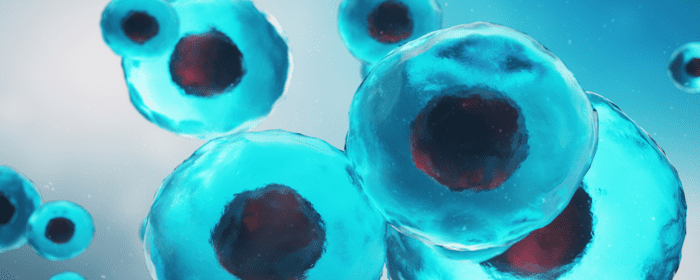
by Stemedix | Apr 1, 2024 | Stem Cell Research, Age Management, Mesenchymal Stem Cells, Regenerative Medicine, Stem Cell Therapy, Studies
According to the Centers for Disease Control and Prevention, four million adults in the United States have fibromyalgia. It’s an often-misunderstood condition that leads to systemic joint and muscle pain, along with fatigue, making daily life very difficult. To deal with the pain the condition causes, it’s important to understand why it occurs. Learn more about fibromyalgia and your pain management options.
What Is Fibromyalgia? Symptoms and Causes
Fibromyalgia is a condition that leads to pain and tenderness all over the body. It’s a chronic condition, though symptoms tend to come and go. During flare-ups, the pain can be significant enough to interfere with daily life while also affecting sleep, leading to mental and physical distress.
During a flare-up, you can experience:
- Fatigue
- Pain
- Headaches
- Face and jaw pain
- Bladder control issues
- Digestive problems
- Insomnia
It’s not clear what causes fibromyalgia, but scientists have found that certain conditions, as well as stress, can trigger it. You are also more likely to have this condition if you have a relative who suffers from it. Women are twice as likely as men to develop it.
People living with conditions like arthritis, depression, anxiety disorders, and irritable bowel syndrome are more likely to develop fibromyalgia.
Fibromyalgia can affect people of all ages, including children, but it’s more common in those who are middle-aged.
Diagnosing Fibromyalgia
If you’re experiencing symptoms, your doctor will likely perform a physical exam and discuss your medical history. There’s no test that can officially diagnose fibromyalgia, so your doctor will do what’s called a differential diagnosis — a kind of investigation that functions via a process of elimination.
Your doctor may order blood work to check hormone levels and look for signs of inflammation to help eliminate other diseases.
During the physical examination, your doctor will likely check for the presence or absence of tender spots by using light pressure.
Most of the time, if you have generalized pain that lasts for three months or more without any other underlying conditions, you’ll receive a diagnosis of fibromyalgia. The pain has to be spread throughout your body to get this diagnosis.
Treating Fibromyalgia: What You Can Expect
There isn’t one treatment that works for everyone. Usually, your doctor will try a number of different options, combining them to offer the most effective results.
Your provider will likely treat the condition depending on the symptoms you’re currently experiencing. There are stages of treatment, though these aren’t treatment plans that can be followed in order because the condition can affect you differently during every flare-up.
Exercise to Loosen Muscles
In some cases, turning to physical exercises, including stretching, can help loosen your muscles and ease some of the discomfort.
Low-impact exercises like walking and swimming help build flexibility that can improve your movement during flare-ups while simultaneously helping manage pain with the release of endorphins they stimulate. Exercise may also help you get better sleep.
Medications for Symptom Management
Over-the-counter medications can help manage pain, as can narcotics, though your doctor will prescribe these with care since they can lead to dependence.
Antidepressants can often also help the process, easing some of the fatigue and pain. For those who have trouble sleeping because of fibromyalgia, sleeping aids are often a good choice.
Heat and Cold Therapy for Milder Pain
In some cases, heat and cold therapy is also effective in managing some symptoms, especially if they’re mild. Alternating hot and cold packs helps the muscles release some of the tension that could be causing pain.
Occupational Therapy for Everyday Tasks
Turning to an occupational therapist is a great way of finding out how to restructure your life when you experience flare-ups. This type of therapist can help make adjustments to your work areas while also helping you find better ways of performing certain tasks so that you experience fewer symptoms.
Massage and Acupuncture to Improve Range of Motion
Massage therapy is a trusted technique. It relies on the manipulation of your muscles and soft tissues, increasing blood flow and improving range of motion while helping reduce pain. For many, it helps relieve stress, too, which can impact the severity of the symptoms.
Acupuncture is also helpful, with the needles affecting blood flow levels and even how certain neurotransmitters in the brain work.
Lifestyle Changes for Flare-Up Reduction
Making changes to your everyday life is an important way of helping minimize the symptoms of flare-ups, so try to incorporate some into your daily life. The right options can depend on your preferences. Some people turn to meditation, while others prefer to do breathing and mindfulness exercises.
Regenerative Medicine to Handle Inflammation
One option people choose to try because of its promise is regenerative medicine.
The variety of treatments available include platelet-rich plasma therapy and stem cell therapy, which uses mesechymal stem cells to reduce inflammation and help calm the immune system. This makes it possible to better handle symptoms when you do have a flare-up.
Stem cell therapy is easy to combine with other treatment options and doesn’t require a long recovery period or the stress of dealing with side effects. Stem cell therapy and other regenerative medicine options help treat the underlying triggers like inflammation, so you’re not just covering symptoms with medications.
Living With Fibromyalgia
It can seem daunting to live with a chronic condition like fibromyalgia, but with some lifestyle changes and an understanding of what triggers your flare-ups, as well as a combination of treatments, you can better manage the condition.
If you’re dealing with fibromyalgia, ask your doctor whether an option like stem cell therapy and other regenerative medicine treatments can help.
Choosing options that target inflammation and trying to get to the underlying cause of the problem instead of only masking the symptoms can make it possible to live a happy and healthy life with fibromyalgia. To learn more about pain management for Fibromyalgia visit our website or contact us now!

by admin | Mar 28, 2024 | Neuropathy, Mesenchymal Stem Cells, Stem Cell Research, Stem Cell Therapy
The International Association for the Study of Pain defines neuropathic pain as “pain arising as a direct consequence of a lesion or disease affecting the somatosensory system”. While general neuropathy is diverse by nature, neuropathic lesions generally fall into four categories: focal or multifocal lesions of the peripheral system, general lesions of the peripheral nervous systems, lesions of the central nervous system, and complex neuropathic disorders.
Although neuropathic pain is typically characterized as chronic pain, it is also considered more severe than other types of chronic pain; this is in large part due to the increased disruption to overall quality of life when compared with other chronic pain syndromes.
As part of this review, Fortino, Pelaez, and Cheung review specific types of neuropathic pain and summarize current research being done to replace pharmacological treatments with cellular therapies, including stem cells, designed to have a longer-lasting effect on the treatment of neuropathic pain.
Neuropathic pain presents itself in many different forms, including spontaneous sensations and superficial pain. These forms of neuropathic pain differ from nociceptive pain in that nociceptive pain occurs as a result of tissue damage while neuropathic pain is the product of damage to the peripheral or central nervous system. Neuropathic pain also differs from nociceptive pain in its proportion to the intensity of the stimuli; in other words, while nociceptive pain is proportional to the intensity of the stimuli, neuropathic pain is not.
Considering that uninjured fibers that intermingle with degenerating nerve fibers participate in pain signaling, it is important for the environment surrounding these uninjured nerve fibers to be able to protect them from degeneration and exacerbation associated with neuropathic pain. Since growth factors have proven critical in promoting neuron development and survival and since neurotrophic factors are secreted by stem cells, researchers hypothesize that stem cells present a potential therapy for longer lasting treatment of neuropathic pain.
Clinical studies have demonstrated that neurotrophic factors offered by stem cells when in direct or indirect contact with the lesioned nerve, appear to provide neuroprotection and neuroregenerative effects.
Despite the potential for stem cell therapies to provide protection from neurodegeneration and to promote neuroregeneration, the authors raise several issues that need to be addressed, including determining an optimal dose for stem cell transplantation and obtaining a better understanding of the homing capabilities of stem cells.
In addition to exploring the benefits of neurotrophic factors of stem cells in treating neuropathic pain, transplantation of human mesenchymal stem cells (hMSCs) to explore potential benefits in treating diabetic peripheral neuropathy and spinal cord injuries are also currently being evaluated.
While the role of stem cells in the treatment of neuropathic pain is not yet fully understood, the authors find their ability to modify cellular processes to provide protective and restorative environments that can reverse the causes of neuropathic pain a promising therapy for the long-term treatment of this condition.
Source: “Concise Review: Stem Cell Therapies for Neuropathic Pain – PMC.” https://www.ncbi.nlm.nih.gov/pmc/articles/PMC3667564/.

by admin | Mar 21, 2024 | Neuropathy, Mesenchymal Stem Cells, Stem Cell Research, Stem Cell Therapy
Neuropathic pain is pain caused as part of a dysfunction in the nervous system, including the peripheral nerves, brain, and spinal cord. Often characterized by spontaneous pain occurring for no specific reason, neuropathic pain can range from mild to severe and is currently estimated to affect 150 million people in the United States. The risk of experiencing neuropathic pain is also much higher in those with preexisting medical conditions, especially diabetes.
Treating neuropathic pain has proven to be very challenging and, to date, most current medical treatments are designed to mitigate pain while not addressing the underlying cause of the pain.
Spinal reorganization and changes in the excitatory or inhibitory pathways controlling neuropathic pain development following peripheral nerve injury are correlated with altered gene expression. Considering this, Siniscalco, Rossi, and Maione review newer molecular methods, including gene therapy and delivery of biologic anti-nociceptive molecules, as potential therapeutic approaches for the treatment of neuropathic pain.
The authors also review the use of stem cell therapy as the potential to slow the progression of or even altogether block neuropathic pain. Stem cells have the ability to incorporate into the spinal cord, differentiate, and to improve locomotion recovery. Furthermore, and despite associated ethical concerns, human stem cells have demonstrated the ability to migrate to the injured area of the spinal cord and differentiate in order to promote axon regeneration and synapse regeneration as a way to alleviate neuropathic pain and improve motor behavior.
Further exploring stem cell therapy as a potential treatment for neuropathic pain, Siniscalco et al. point out that using genetically engineered stem cells expressing trophic factors appears to be a useful tool in relieving neuropathic pain. The authors hypothesize that the benefit brought by stem cells could be a result of their ability to deliver anti-nociceptive molecules close to the pain processing centers or site of injury and that the trophic factors provided by stem cells could, themselves, act as an anti-nociceptive drug.
Of the many various types of stem cells, the authors believe that mesenchymal stem cells (MSCs) demonstrate the potential for the best results in pain-care research. Found throughout the body, MSCs demonstrate a high expansion potential, genetic stability, and stable phenotype, and are easily collected and transported.
In addition, MSCs also are able to migrate to sites of tissue injury and demonstrate strong immunosuppressive properties and are able to differentiate into neurons and astrocytes. Animal models of neurological disorders have demonstrated that MSCs are able to improve neurological deficits and to promote neuronal network improvements.
Although the underlying mechanisms of how MSCs specifically address pain behavior are yet to be fully understood, their ability to migrate to injured tissue and mediate functional recovery suggests that MSCs could modulate pain generation after a neuropathic injury.
The authors conclude that neuropathic pain is a very complex disease that is very difficult to treat. While current treatment is designed to address the symptoms of pain, a treatment for the cause has yet to be developed. There are new molecular methods, including antisense strategy, gene therapy, and virus therapy currently being evaluated as potential therapeutic options to treat the underlying causes of pain.
Most recently, preliminary clinical evidence suggests that stem cell therapy could be the most effective long-term treatment for definitive relief of pain caused by neuropathic injury or disease.
Source: “Stem cell therapy for neuropathic pain treatment – PMC – NCBI.” https://www.ncbi.nlm.nih.gov/pmc/articles/PMC3908122/.

by admin | Mar 14, 2024 | Spinal Cord Injury, Mesenchymal Stem Cells, Stem Cell Research, Stem Cell Therapy
Nerve damage resulting from spinal cord injury (SCI) often leads to temporary or permanent loss of function and contributes to poor quality of life. Most common among males below 30 years of age, SCI recovery has been limited specifically as a result of the low growth capacity of neurons and a lack of nerve growth factors.
While current SCI treatment focuses on stabilizing the injured area and preventing secondary injury through a combination of surgery, pharmacological intervention, and rehabilitation, the success of treatment has been limited and unable to stimulate spinal cord regeneration.
Considering the limited success of confidential SCI treatments, several types of stem cells are currently being tested for the treatment of SCI, including mesenchymal stem cells (MSCs) isolated from bone marrow (BMSCs), umbilical cord (UC-MSCs), and adipose tissue (ADSCs).
In this review, Liau et al. discuss the current status of MSC therapy for SCI, criteria to consider when applying MSC therapy, and review novel biological therapies that can be used together with MSC therapy to enhance its therapeutic potential.
Based on the results of clinical trials, the authors conclude that MSC therapy is beneficial for SCI patients. While not all patients responded to MSC therapy, the authors note that observed improvement varied from patient to patient. In addition to discrepancies attributed to patient variations, source of MSC, route of stem cell administration, timing of cell administration, number of cell administrations, number of cells administered, and cell preparation methods were also observed to affect the efficacy of therapy.
Despite the delayed progress in phase III trials, there are several new therapeutic treatment strategies that incorporate stem cell secretory product-based therapy, including stem cell secretome therapy, scaffold-based therapy, and immunotherapy. The authors indicate that all of these novel therapeutic approaches may be able to be used in combination with MSC therapy to enhance the therapeutic efficacy of MSCs by improving cell survival, migration, engraftment, and proliferation.
The authors conclude this review by summarizing that, to date, MSC therapy has been demonstrated to be safe but unable to improve neurological function for all treated patients. Despite the limited success of this therapy, other studies are currently underway in an effort to improve the delivery of MSCs and MSC-derived products by utilizing scaffolds or by combining them with immunotherapy to improve the efficacy of the treatment.
Source: “Treatment of spinal cord injury with mesenchymal stem cells – NCBI.” 22 Sep. 2020, https://www.ncbi.nlm.nih.gov/pmc/articles/PMC7510077/.

by admin | Mar 7, 2024 | Spinal Cord Injury, Mesenchymal Stem Cells, Stem Cell Research, Stem Cell Therapy
Spinal cord injuries (SCI) are the most serious complication associated with spinal injuries and often result in permanent damage to the nervous system. With nearly 300,000 people in the United States living with SCI, the inability to treat these injuries has a significant impact on physical, mental, and financial health.
Additionally, while 94% of those suffering acute traumatic SCI survive initial treatment for the condition, both long-term survival and quality of life are often reduced as a result of post-injury complications. Further complicating the issue is the fact that the current standard of SCI treatment is designed only to reduce the secondary effects of injury and not directly promote healing through neuroregeneration.
Considering that mesenchymal stem cells (MSCs) are known to have anti-inflammatory properties, promote vascular regeneration, and to release neuro-nutrients, they are becoming increasingly promising as a potential treatment for SCI.
In this article, Xia et al. examine the evidence of pathophysiological changes occurring after SCI, review the underlying mechanisms of MSCs, summarize the potential application of MSCs in clinical practice, and highlight the challenges surrounding the use of MSCs in the treatment of SCI in future applications.
The goal of any SCI therapeutic treatment option is to promote rapid recovery of neurological function through a combination of medical and surgical interventions. However, to date, there are no optimal treatment strategies that allow for this goal to be met.
MSCs’ multidirectional differentiation capabilities are highly viable and known to provide structural support in SCI. In terms of using MSCs in the treatment of SCI, and specifically for their role as an anti-inflammatory agent, the most attractive aspect is their unique immunomodulatory ability.
Additionally, the goal of treatment after SCI is to repair the damaged nerve cells and restore nerve function. Studies exploring differentiation of MSCs after SCI have demonstrated spontaneously expressed neuromarkers at SCI sites and have allowed for recovery of neurological function.
The authors point out that traumatic SCI usually results in the direct destruction of blood vessels around the spinal cord which often results in ischemic necrosis and secondary injuries. Since promoting vascular recovery contributes to the recovery of motor function in patients with SCI, SCI vascular recovery is a new target for the treatment of SCI. Several studies have observed that MSCs secrete angiogenic factors that promote pericyte recruitment, a critical step in vascular maturation. The authors also report recent findings indicating that 57% of the vascular endothelial cells around the SCI of a mouse showed vascular regeneration effects after receiving MSC-EVs with an extensive vascular network formed around the injury over a period of 28 days.
Although MSCs are beneficial to the recovery of neurological function in patients with SCI, the authors call for additional research to focus on better understanding the SCI cellular mechanisms and MSC action for use in clinical practice. Additionally, Xia et al. point out that the survival rate and long-term survival of MSCs in the SCI microenvironment remain an unresolved issue.
MSCs repair SCI through anti-inflammatory effects and by promoting nerve axon regeneration and vascular regeneration. While further research is required to fully understand the mechanism underlying the effect of MSCs, the authors conclude the role of MSCs in treating SCI has been demonstrated in several clinical trials.
Source: “Mesenchymal stem cells in the treatment of spinal cord injury.”
https://www.frontiersin.org/articles/10.3389/fimmu.2023.1141601/full.

by admin | Feb 29, 2024 | Psoriasis, Mesenchymal Stem Cells, Stem Cell Research, Stem Cell Therapy
Chronic skin inflammatory diseases, including atopic dermatitis (AD) and psoriasis, are considered uncontrolled responses to systemic inflammation.
Characterized by swelling, irritation, and rash chronic skin inflammatory disease, these common skin inflammatory diseases are estimated to affect 25% of the population, with AD and psoriasis being the most common form of the disease.
Recent methods used to treat AD and psoriasis have been based on inhibition, not regulation, of the condition. Over time, these methods of treatment can result in a number of side effects and drug resistance.
Considering that mesenchymal stem cells (MSCs) have been used to treat a number of immune diseases, Yang et al. believe they present as a promising treatment for chronic skin inflammatory disease. As part of this review, the authors discuss the therapeutic effects of MSCs on AD and psoriasis, provide clinical evaluation of the administration of MSCs, and present a comprehensive vision for the application of MSCs in future research and treatment.
AD and psoriasis are known to be systemic and immune-allergic inflammatory skin diseases caused primarily by the imbalance between pro- and anti-inflammatory factors. MSCs play a role in regeneration and immunomodulation and their function in skin lesions present in these conditions could provide important information about their biological function in the diseases.
Considering that inflammation related to both AD and psoriasis begins at the MSC level, a treatment designed to address abnormal MSCs can potentially improve the pathogenesis of these diseases. While this method appears promising, the authors point out that the therapeutic methods designed to treat lesions associated with MSCs have yet to be determined and treating skin inflammatory disease with these improved MSCs requires further clinical study.
The authors also highlight the potential benefit of preconditioning MCSs as a way to improve the immune regulation capacity in treating a range of immune diseases. Specifically, precondition MSCs have been shown to alleviate allergic inflammation in keratinocytes and reduce inflammation in the skin through the JAK-STAT pathway.
While the benefits associated with preconditioning MSCs for this purpose require further research, Yang et al. believe that preconditioning MSCs with inflammatory factors can more effectively treat skin inflammatory diseases.
In addition to showing the benefits of MSC therapy when treating AD and psoriasis, the authors of this review also point out some limitations associated with the application of MSCs. These limitations include the need for double-blind placebo-controlled studies to indicate the potential clinical application of MSCs in AD and psoriasis and issues with the production and cost of MSCs not being able to reach the standard (making it difficult to translate into clinical treatment).
Despite these limitations, the application of MSCs has shown to be more effective in treating AD and psoriasis than other options that are currently available.
Yang et al. conclude that the advancing technology for administering MSCs and their capability of regeneration, immunomodulation, and differentiation have made them a promising strategy for the treatment of skin inflammatory diseases. The authors also call for additional studies to further uncover the mechanisms of the therapeutic effects of MSCs in AD and psoriasis to help better define therapeutic strategies for treating these diseases.
Source: Yang J, Xiao M, Ma K, Li H, Ran M, Yang S, Yang Y, Fu X and Yang S (2023) Therapeutic effects of mesenchymal stem cells and their derivatives in common skin inflammatory diseases: Atopic dermatitis and psoriasis. Front. Immunol. 14:1092668. doi: 10.3389/fimmu.2023.1092668







 St. Petersburg, Florida
St. Petersburg, Florida
